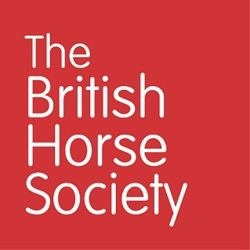| 1. Understand how to lunge competition horses |
1.1 Evaluate the use of a range of training aids for lungeing |
Range = 2 or more. Any training aids in common use which may include:
- Side reins (variations of type and positions)
- Pessoa/Whitaker
- Chambon
- Harbridge
- Vienna reins
- Bungees
- Running reins
- De Gogue
- Waldhausen
Evaluate through discussion, including:
- Consideration of horse welfare
- Effectiveness for purpose
|
Trainer endorsement* |
|
1.2 Explain the use of long reining |
Use to include:
- Different types of long reining
- Use for young horses
- Use for experienced horses
- Process of introducing long reining to a horse
|
Trainer endorsement* |
| 2. Be able to lunge a competition horse to develop its way of going |
2.1 Maintain health, safety and welfare of horse, self and others at all times |
Health, safety and welfare in relation to:
- Appropriate personal protective equipment for handler
- Use of schooling area
- Awareness of space and other users
- Horse fitness and level of education
- Checking tack for safety
- Leading the horse
- Lungeing the horse
- Lungeing with poles
|
Observation |
|
2.2 Assess and evaluate the horse’s way of going |
Way of going to include:
- Informed observation of the horse working in walk, trot and canter
- Comparison of way of going on both reins
- With and without side reins
|
Discussion |
|
2.3 Demonstrate techniques appropriate for the horse |
Techniques to include:
- Handling of equipment
- Stance, body language, position, tone of voice, influence
- Appropriate circle size
- Side reins attached appropriately
- Working at relevant rhythm and tempo
- Work over poles (as appropriate)
- Developing balance
|
Observation |
|
2.4 Utilise a range of exercises to improve the horse’s way of going |
Exercises may include:
- Transitions
- Collecting and lengthening stride
- Increasing and decreasing the size of the circle
- Use of poles (as appropriate) to develop the way of going
|
Observation |
|
2.5 Develop an effective rapport with the horse |
To include:
- Manner with the horse
- Effectiveness of aids
- Control and influence over horse’s way of going
- Empathy with the horse’s needs
|
Observation |
|
2.6 Evaluate the session |
May include:
- Reflection on the content of session
- Logical sequence and timing
- Debate effectiveness of exercises chosen
- Identify strategies to improve personal performance
- Identify effective techniques used
|
Discussion |
|
2.7 Develop a plan for progression |
Plan to include:
- Identify areas for improvement
- Consider progression for future sessions for the development of the horse
|
Discussion |
